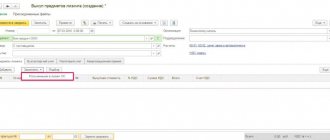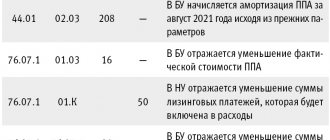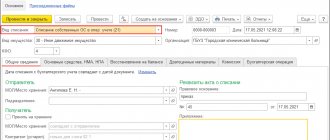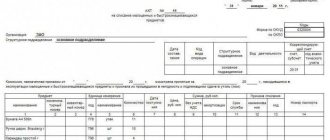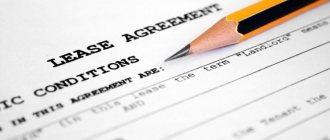Leasing is a form of rental. Regulated by the Civil Code of the Russian Federation and Federal Law No. 164 “On Leasing” dated October 29, 1998. Despite the fact that the leased property is not owned by the company, it still needs to be taken into account. This property is also subject to moral and physical wear and tear. Depreciation of leased assets must be taken into account correctly. Accounting features are determined by the person on whose balance sheet the property is located.
Who and in what order calculates depreciation on the leased asset ?
Legal basis
Leasing is regulated by Federal Law No. 164 of October 29, 1998 and articles 665-670 of the Civil Code of the Russian Federation (section 4). Accounting for leasing operations is carried out on the basis of PBU 6/01 and Order of the Ministry of Finance No. 15 of February 17, 1997. Tax accounting is carried out on the basis of Chapter 25 of the Tax Code of the Russian Federation (Articles 259.3, 264, 272).
Question: How to reflect in the accounting of the lessee organization, which takes into account the leased asset on its balance sheet, the correction of an error made when calculating depreciation on leased property due to an incorrectly determined useful life in accounting, if this error is insignificant and was identified at the time of return of the property to the lessor after approval of the annual financial statements (in May 2022)? View answer
The amount of depreciation for leasing is determined by the participant who accepts the leased asset on the balance sheet. The basis is paragraph 10 of Article 258 of the Tax Code of the Russian Federation. The party that accepts the object for balance must be specified in the contract. When determining depreciation amounts, you must first determine the useful life. It can be installed either independently or based on the OS Classification.
Depreciation must be written off from the month following the month of acceptance of the leased asset for use.
The organization transferred lease payments under the buyout lease agreement, and along with them transferred part of the buyout value. The company included the entire amount of each payment in other expenses. However, during the inspection, the inspection came to the conclusion that the redemption price should form the initial cost of the object and then be written off through depreciation. View the court's opinion
Is it possible to use bonus depreciation on leased property?
In accordance with paragraph 9 of Art. 258 of the Tax Code of the Russian Federation: “The taxpayer has the right to include in the expenses of the reporting (tax) period expenses for capital investments in the amount of no more than 10 percent (no more than 30 percent in relation to fixed assets belonging to the third to seventh depreciation groups) of the original cost of fixed assets (except for fixed assets received free of charge), as well as no more than 10 percent (no more than 30 percent in relation to fixed assets belonging to the third to seventh depreciation groups) of expenses incurred in cases of completion, additional equipment, reconstruction, modernization, technical rearmament, partial liquidation of fixed assets and the amounts of which are determined in accordance with Article 257 of this Code.”
We believe that leasing payments are not capital investments in fixed assets, since at the time the facility is put into operation, the lessee does not incur expenses for the acquisition of the leased asset, since the redemption value of the object has not been repaid.
This approach is confirmed by established judicial practice.
The Resolution of the AS ZSO dated 06/03/2015 No. Ф04-18551/2015 concluded that:
“in order to take advantage of the right to use bonus depreciation declared in the accounting policy of the organization for tax purposes, the taxpayer must make expenses for capital investments in fixed assets.
It should be taken into account that the costs of a capital investment can only be the costs of paying the redemption value of a fixed asset, since leasing payments are independent expenses when the tax base for income tax is reduced.”
A similar point of view is expressed in the Resolutions of the Federal Antimonopoly Service of the Moscow Region dated 04/11/2012 in case No. A40-23166/11-116-67, the Seventh AAS dated 01.22.2015 No. 07AP-10593/14, and the Arbitration Court of the Moscow Region dated 03/28/2016 No. F05-1440/16 in case No. A40-94972/2015.
The regulatory authorities, in numerous clarifications, also conclude that there are no grounds for the use of a depreciation bonus by the lessee upon receipt of the leased asset (Letters of the Ministry of Finance of the Russian Federation dated December 9, 2015 No. 03-07-11/71838, dated February 15, 2012 No. 03-03-06/1 /85, dated March 24, 2009 No. 03-03-06/1/187 and the Federal Tax Service of Russia dated April 8, 2009 No. ShS-22-3/267).
The Letter of the Ministry of Finance of the Russian Federation dated May 18, 2012 No. 03-03-06/1/253 states:
“Since leasing payments are not expenses for capital investments , completion, additional equipment, reconstruction, modernization, technical re-equipment and partial liquidation of fixed assets, the depreciation premium does not apply to such payments .”
The same letter states that:
“the depreciation bonus can be taken into account by the lessee in relation to the redemption price of the leased asset.”
Thus, in our opinion, the lessee, when paying lease payments, does not incur costs for capital investments, therefore, the use of a depreciation bonus when using the leased asset is unjustified.
Items are on the balance sheet of the leasing recipient
The leasing recipient can account for leased assets on the balance sheet as fixed assets. The initial cost is created on the basis of total acquisition costs excluding VAT. The basis is clause 8 of PBU 6/01. In accounting, the useful life is the duration of the leasing agreement (clause 20 of the PBU).
In what cases and in what order is accelerated depreciation applied to the leased asset ?
Depreciation within the framework of tax accounting is carried out on the basis of Article 259 of the Tax Code of the Russian Federation. When determining income tax, depreciation and payments under the contract are considered the costs of the lease recipient. In this case, the accounted depreciation must be excluded from the amount (subclause 10 of clause 1 of Article 264 of the Tax Code of the Russian Federation). The useful life is calculated based on the rules of the Tax Code of the Russian Federation.
Let's look at the transactions that are needed when accepting leased objects onto the balance sheet of the leasing recipient:
- DT08 KT76. Creation of the initial cost of the leasing object based on accounting rules.
- DT01 KT08. The object is included in fixed assets.
- DT20, 25-26, 44, 91 KT02. Definition of depreciation.
- DT02 KT01. Write-off of an object for which depreciation has been accrued in full.
The asset is written off when the lease agreement has expired.
Items are on the balance sheet of the person providing the leasing
The lessor can account for the leased asset on its balance sheet. In this case, the leaseholder does not need to write off depreciation. But he is obliged to accept the item into off-balance sheet account 001. The item is accounted for as rented (clause 8 of Order No. 15). The total cost is determined on the basis of the leasing agreement. After the agreement ends, the item must be written off from the off-balance sheet account. The leasing recipient needs to accept the obligatory payments under the leasing agreement into the structure of other expenses. Acceptance for accounting is carried out as these payments are accrued (clause 7 of Article 272 and clause 1 of Article 264 of the Tax Code of the Russian Federation).
The person providing leasing services determines depreciation in a standard manner. Objects must be accounted for in account 03. Depreciation deductions are recorded in a subaccount to account 02. The lessor needs to use these postings:
- DT08 KT60. Purchase of equipment for its transfer on the basis of a leasing contract.
- DT08 KT60. Expenses for the purchase of equipment.
- DT19 KT60. Accounting for VAT on purchased equipment.
- DT76 KT03. Transfer of equipment to the balance of the lessee.
- DT03/1 KT08. Recording of the leased asset in accounting.
- DT03/2 KT03/1. The equipment is available for leasing.
- DT20 KT02. Fixation of depreciation charges.
- DT46 KT20. Write off depreciation for sales.
- DT90/3 KT68/1. Accrual of VAT on leasing payments.
- DT62 KT90/1. Calculation of leasing payments.
One of the key primary documents is the leasing contract.
Depreciation coefficient for leasing
Recipients of leasing on the basis of paragraph 3 of clause 9 of Order of the Ministry of Finance No. 15 have a privilege. Its essence is the possibility of using an accelerated coefficient. Its maximum possible value is 3. The coefficient is applied specifically to leased objects and specifically to depreciation. It can be used in both accounting and tax accounting. However, the coefficient becomes relevant only if these conditions are met:
- The leased object is on the balance sheet of the lease recipient.
- The declining balance method is used as a depreciation method (Resolution No. 2346/11 of July 5, 2011).
- When establishing the useful life, the item was not included in depreciation groups 1-3 (clause 2 of Article 259.3 of the Tax Code of the Russian Federation).
If these conditions are not met, then the coefficient cannot be used.
IMPORTANT! There is paragraph 5 of Article 259.3 of the Tax Code of the Russian Federation. It prohibits the simultaneous use of several coefficients for one subject. If a non-linear method is used when calculating depreciation, objects are accounted for by creating separate groups and subgroups for depreciation. This applies only to those objects in relation to which an accelerating factor is used. The basis is paragraph 13 of Article 258 of the Tax Code of the Russian Federation.
The lessee may recognize expenses that did not exist at all.
The term of the leasing agreement is less than the depreciation period
Let's consider what expenses are incurred by both parties if the term of the leasing agreement is less than the depreciation period.
The object is recorded on the lessor's balance sheet.
Over the life of the contract, the owner of the asset charges depreciation. After its completion, since the redemption value has not been allocated, the residual value is recognized as expenses in equal shares over the remaining useful life of the asset (clause 3 of Article 268 of the Tax Code of the Russian Federation).
The recipient of the object takes into account leasing payments in tax expenses (subclause 10, clause 1, article 264 of the Tax Code of the Russian Federation). Thus, both parties have the opportunity to recognize only those expenses that they actually incurred.
Tax authorities may claim that since the redemption value has not been allocated, it must be calculated independently. And under no circumstances should it be expensed as part of lease payments. But since the Tax Code of the Russian Federation does not provide for this, companies successfully manage to challenge such claims (resolution of the Federal Arbitration Court of the Central District dated 02.20.09 No. A35-1588/08-C8, upheld by the ruling of the Supreme Arbitration Court of the Russian Federation dated 06.19.09 No. VAS-7362/ 09).
The property is reflected in the lessee's accounting.
The user of the asset is allowed to include in tax expenses both depreciation deductions (Articles 257–259.3 of the Tax Code of the Russian Federation) and leasing payments, but minus depreciation (subclause 10, paragraph 1, Article 264 of the Tax Code of the Russian Federation). This allows you to receive additional benefits if the depreciation period is longer than the term of the leasing agreement. In this case, the company will not only take into account the entire amount of payments, but also, on top of this, part of the depreciation charges based on the original cost of the object according to the lessor (clause 1 of Article 257 of the Tax Code of the Russian Federation).
As for the owner of the object, he writes off the costs of its acquisition in proportion to the lease payments received (subclause 10, clause 1, article 264, clause 8.1, article 272 of the Tax Code of the Russian Federation).
An example of calculating additional tax benefits.
Suppose the parties entered into a leasing agreement for two years, under which fixed assets with an initial cost of 1.2 million rubles with a useful life of three years are transferred. The redemption price is not separately allocated. The annual fee under the contract is 0.8 million rubles, which for the entire term of the contract will be 1.6 million rubles.
The leased object belongs to the 2nd depreciation group, therefore an increased depreciation rate is not applied (Article 259.3 of the Tax Code of the Russian Federation). The annual amount of depreciation based on the straight-line method and the cost of the asset, according to the lessor, is 400 thousand rubles. (RUB 1,200,000: 3 years).
Let's compare the tax consequences for the lessee depending on who is depreciating the object. The calculation is presented in Table 1.
Table 1. What expenses will the lessee reflect if the term of the leasing agreement is less than the depreciation period
| Index | Depreciation, rub. | Lizine payments, rub. | Amount of tax expenses, rub. | Amount of real costs (equal to leasing payments), rub. | Reduction in profit tax, rub. |
| Expenses of the lessee, if the object is included in the balance sheet of the lessor | |||||
| 1st year | 0 | 800 000 | 800 000 (0 + 800 000) | 800 000 | 160 000 |
| 2nd year | 0 | 800 000 | 800 000 (0 + 800 000) | 800 000 | 160 000 |
| 3rd year | 0 | 0 | 0 | 0 | 0 |
| Total | 0 | 1 600 000 | 1 600 000 | 1 600 000 | 320 000 |
| Expenses of the lessee if the object is accounted for on its own balance sheet | |||||
| 1st year | 400 000 | 800 000 | 800 000 (400 000 + (800 000 – 400 000)) | 800 000 | 160 000 |
| 2nd year | 400 000 | 800 000 | 800 000 (400 000 + (800 000 – 400 000)) | 800 000 | 160 000 |
| 3rd year | 400 000 | 0 | 400 000 | 0 | 80 000 |
| Total | 1 200 000 | 1 600 000 | 2 000 000 | 1 600 000 | 400 000 |
If the asset is on the lessor’s balance sheet, then the user recognizes only one type of tax expense - leasing payments. In the third year, no costs arise - the contract has expired and the redemption value is zero. As a result, expenses over three years will amount to 1.6 million rubles, which will reduce income tax by 320 thousand rubles. (RUB 1,600,000 × × 20%).
However, if the lessee depreciates the object, he actually has two types of expenses: depreciation and the lease payment reduced by the amount of depreciation. Thus, in the first two years, tax expenses will be 800 thousand rubles. (800,000 – – 400,000 + 400,000), and in the third year the taxable profit will be reduced only by the amount of depreciation – 400 thousand rubles. This will give tax savings compared to the first option in the amount of 80,000 rubles. (RUB 400,000 × 20%).
Justification of tax savings.
Since the property becomes the full property of the taxpayer, nothing prevents depreciation outside the leasing agreement. At the same time, there is no reason for the company to revise the depreciation rate. After all, neither the useful life nor the initial cost of the object changes due to the fact of completion of the leasing agreement.
There is a risk that tax authorities will demand that the value of the property be recalculated depending on its redemption price. Since it is zero, it means there is nothing to depreciate. Indirectly, this risk is confirmed by the position set out in letters of the Ministry of Finance of Russia dated June 25, 2009 No. 03-03-06/1/428 and dated March 4, 2008 No. 03-03-06/1/138. In them, officials indicate that the initial cost of the fixed assets at the end of the lease agreement is formed by the amount of redemption payments.
However, such a procedure is not provided for by the Tax Code of the Russian Federation - the company is not obliged to stop depreciating an object immediately after the end of the lease agreement and register it at a new value or adjust the residual value.
If the contract term is longer than the depreciation period
Tax savings are achieved if the annual depreciation is greater than the lease payment for the same period.
An example of calculating additional tax benefits.
Let's change the conditions in the considered example: we will increase the contract term to three years, and the useful life of the object to six years (it belongs to the 4th depreciation group). In this case, the lessee has the right to an increased depreciation coefficient - 3 (clause 2 of Article 259.3 of the Tax Code of the Russian Federation). Therefore, in fact, the object will be depreciated not in six years, but in two years. The calculation is presented in Table 2.
Table 2. Calculation of the tax base of the lessee if the term of the leasing agreement is longer than the depreciation period
| Period | Depreciation, rub. | Leasing payments, rub. | Amount of real costs (equal to leasing payments), rub. | Amount of tax expenses, rub. | Reduction in income tax, rub. |
| 1st year | 600,000 (RUB 1,200,000 / 6 years × 3) | 533,333 (RUB 1,600,000 / 3) | 533 333 | 600,000 (since depreciation is greater than the lease payment) | 120,000 (RUB 600,000 × 20%) |
| 2nd year | 600,000 (RUB 1,200,000 / 6 years × 3) | 533,333 (RUB 1,600,000 / 3) | 533 333 | 600,000 (since depreciation is greater than the lease payment) | 120,000 (RUB 600,000 × 20%) |
| 3rd year | 0 | 533,333 (RUB 1,600,000 / 3) | 533 333 | 533 333 | 106,667 (RUB 533,333 × 20%) |
| Total | 1 200 000 | 1 600 000 | 1 600 000 | 1 733 333 | 346 667 |
Thus, over three years, 133 thousand rubles more will be recognized in expenses than was actually spent (1,733,333 - 1,600,000). Savings on income tax will amount to 27 thousand rubles. (RUB 133,333 × 20%).
Justification of tax savings.
The tax benefit is achieved due to the fact that the amount of accrued depreciation exceeds the amount of leasing payments for the same period. As in the first case, this also does not violate any norms of the Tax Code of the Russian Federation. Moreover, the Russian Ministry of Finance is not against this accounting procedure (letter dated March 29, 2006 No. 03-03-04/1/305).
On-site inspectors may indicate that the costs are unreasonable because they were not actually incurred by the company. But this situation is caused by the fact that the Tax Code of the Russian Federation provides for the possibility of depreciation of “other people’s” property, which in itself contradicts the economic meaning of accounting for fixed assets. This means that the legislator thus established a certain benefit for the lessee.
Property tax
Property tax is calculated and paid by the party to the agreement on whose balance sheet the leased object is located. If the objects are on the balance sheet of the leasing recipient, he records it in account 03. The leasing recipient records the leased property in off-balance sheet account 001.
If the leased object is on the balance sheet of the lease recipient, the property must be placed in account 01 “OS”. The person who provided the lease records the transferred object in off-balance sheet account 011. Property tax is paid by the recipient of the lease.
At the end of the contract, the tax is paid by the person who receives ownership of the leased item. If the property is purchased at the end of the contract, the tax is paid by the leaseholder.
Transport tax
Transport tax is paid by the organization for which the vehicle is registered. The car can be registered to the person who provided the lease. In this case, it is this person who pays the transport tax. He makes payments throughout the duration of the contract.
If the property is not to be repurchased, the lessor pays transport tax upon termination of the contract. The leasing recipient can register the vehicle in his name. These options are relevant:
- The leasing recipient issues a temporary registration of the vehicle in his name. When purchasing a vehicle, the car is registered in the name of the person providing the leasing. But then a temporary registration is issued for the leasing recipient, which will be valid for the duration of the contract. But even in such a situation, the tax will be paid by the lessee. Basis - letter of the Ministry of Finance No. 03-05-05-04/12.
- Initially, the vehicle was registered in the name of the lease recipient. The tax will be paid by the leaseholder. If the vehicle is not purchased, the responsibility for tax payments may pass to the person providing the leasing. However, the transfer of responsibility takes place only after the car is re-registered.
That is, the procedure for paying taxes depends on who exactly the car is registered to.
Accelerated depreciation when leasing
Accelerated depreciation allows you to reduce taxes for the duration of the leasing agreement, as well as buy out the leased asset at a minimum cost.
Article navigation
- General information about depreciation of the leased asset
- How to depreciate a leased car?
- Accelerated depreciation of fixed assets in leasing in 2022
- Accelerated depreciation of real estate under lease
- Features of accelerated car depreciation
- Differences between accounting and tax depreciation of fixed assets
- Reflection of depreciation by the lessee
- Depreciation of the leased asset on the lessor's balance sheet
- Conclusion
According to Article 11 of Federal Law 164 Federal Law, the owner of the leased asset during the term of the agreement is the lessor. In most cases, the leased property is listed on his balance sheet. Depreciation after the purchase of the leased asset is carried out by the new owner. How is it produced up to this point? This is discussed in the article.
